#Padma Purana
Explore tagged Tumblr posts
Text
Krishna, after Arjuni turns back into Arjun: Okay so don't tell about this whole thing to anyone, ever. Promise me.
Arjun: I promise :)
Vyas, later: *writes the Padma Puran and the Krishna-Arjuni incident in detail for the entire world to know*
#bro snitched on himself-#mythology memes#incorrect quotes#incorrect mythology#incorrect mythology quotes#hindu mythology#desiblr#hindublr#hinduism#hindu myths#hindu gods#krishna#lord krishna#krishna x arjun#arjun#arjuna#padma purana#padma puran#vyasa#ved vyasa#hindu#hindu memes#desi tag#desi tumblr#desiposting#mahabharat memes#mahabharat#mahabharata#the mahabharata
66 notes
·
View notes
Text


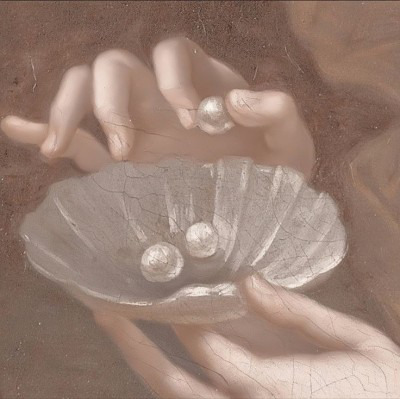
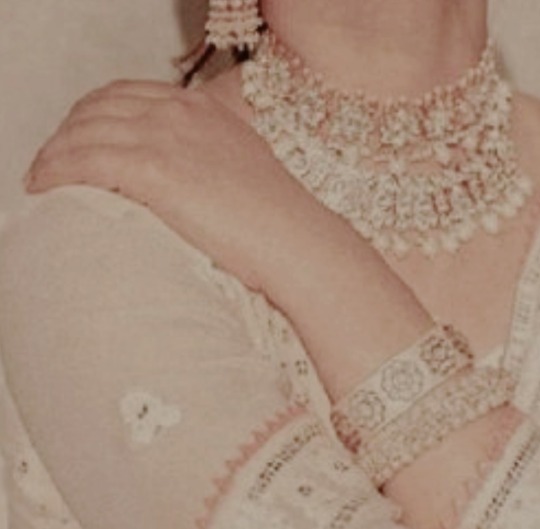




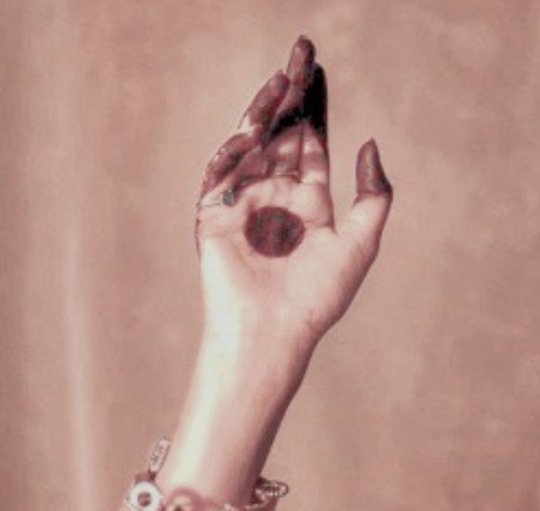
Arjuniya - 🪷🤍
“when Arjuna plunged into the water of the lake, which was tinged with the pollen dropped from white lotuses, lotuses opening on moonrise, (other) lotuses and red and blue lotuses, and which was agreeably perfumed with honey-drops, which was shaken by the notes of corpulent swans, whose four banks were decked with jewels, which had ripples due to gentle breezes, she vanished just there. The charmingly smiling one got up and on seeing around, was confused. He instantly saw himself (to be turned into) a wonderful, excellent lady,
who had a slim, fair, charming body like the rays of pure gold, whose age was that of a sparkling youth, whose face resembled the autumnal moon, whose hair was very dark, curly, glossy and shining with jewels, whose curls of hair on the plate (-like forehead) were brightened up due to the rays from the mark of red lead, who had vanquished Cupid’s bow due to the knittings of the creeper-like eyebrows being manifest, whose wagtail-like eyes were dark like clouds and sportive,
whose round cheeks were sparkling due to the bright lustre of the jewelled ear-rings, whose wonderful creeper-like arms were delicate like lotus-stalks, whose sprout-like hands took away all the beauty of autumnal lotuses, who had put on a waist-band made of gold and arranged cleverly, whose hips were shining with jingling girdles, whose beautiful place of hips was covered with a shining garment, whose lotus-like feet were very charming due to the jingling jewelled anklets, who possessed the skill in the various arts of love being manifested, who was endowed with all (good) characteristics,
who was adorned with all ornaments. Due to the illusion of (i.e. created by) the lover of the cowherdesses he forgot whatever belonged to his former body; and after that, being very much astonished, stood there, not knowing what to do.”
- Padma Purana, 61b-74a
#mahabharata#mahabharat#arjuna#arjun#Arjuni#Arjuniya#desiblr#desi tumblr#Moodboard#mythology moodboard#hinduism#Padma purana#I love herr 🩷#🪷#desi aesthetic#gopiblr#Mahabharata Moodboard#hindu mythology#Hinduism Moodboard#krishnablr#arjun x krishna#krishna x arjuna#???#Krishna x Arjun#Lotus-Moodboards
69 notes
·
View notes
Note
HI! I've been reading through some old posts and i was wondering if you could explain how Arjun did raas with lord krishna? <3
Hello!
So the bit you're referring to is not actually from the Mahabharat. It's from the Padma Purana's pātāla-khanda.
This tiny story is a part of the dialogue that occurs between two people in the future as is the typical narrative style of these tales. It goes something like:
Arjun is curious to know all sorts of details about the raas-leela- where does it happen, how many gopis are there, who are they etc etc. Krishna is cryptic, as usual, and tells him that a man simply cannot perceive it even if the said man is more precious to him than life itself to him. Therefore, it's no use asking. Arjun is Disappointed™. Krishna is soft for him so he tells him it's fine and that he shouldn't worry about it because he'll see for himself. Then he instructs him to go to a goddess(Tripāsundari, to be exact) who will help him.
Arjun goes to her, prays to her and calls to her. She appears, pleased by his devotion and adoration. She also asks him a rhetorical question, that I personally find funny, which basically is along the lines of "What makes you so special that Krishna is letting you have this one thing that no other mortal, deity or ascetic can have?" She doesn't wait for an answer, because I think she already knew and then proceeds to give Arjun a list of prayer related tasks to worship her properly. After he follows her instructions, she and her friend show him Radha's house and vrindavan. Then she tells him to take dip in an auspicious lake and he does and emerges as a beautiful woman.
(At this point, I will be using she/her pronouns for Arjun/Arjuni because that's what the story says.)
Arjuni rises from the lake, having forgotten everything about her male self. There's a lot of poetic waxing about how alluring and attractive her voice, physicality and personality are. She happens upon a bunch of women(the gopis, obviously) who are equally as beautiful and charming as her. All the gopis are very lovely, actually and ask her who she is and how she happened to end up there and kind of soothe Arjuni's anxiety and then all of them introduce themselves. They say that they used to sages in their past life and are now gopis who participate in raas leela with Krishna.
They take her to lake, play with her, bathe her etc etc. It's all VERY sapphic, trust me. There's also a lot of praying involved. After the initiation is over, Arjuni meets Radha. More praying and devotion.
Pleased by all this devotion, Krishna asks Radha to bring Arjuni to him who promptly breaks out into sweaty excitement upon seeing him.
(Okay, now, I guess I'm obligated to inform you that what follows is very...sexual in nature. BUT a lot of Indian spiritual texts consider the sexual and the spiritual to be interconnected. Take from this what you will, I guess.)
The text goes on to describe Krishna's body in HEAVY detail (including equating his thighs to tree trunks?) that makes me genuinely worried that whoever wrote this was incredibly horny. He takes her hand and they um... participate in the leela.
When it's over, Arjuni is Exhausted from all the activity and Krishna tells her to go take a dip in the lake again. She does.
(Back to he/him pronouns people, keep up.)
Arjun surfaces and is dejected from the loss of something so wonderful. Krishna consoles him by saying that they are Dear Friends, as the historians say, and that only he knows something that no one else in three loka does. And if Arjun tells anyone what he has experienced he will curse Krishna. Again, hilarious because if you remember I said that this story is being told to us in a dialogue of TWO DIFFERENT PEOPLE. Which means other people already know. Clownery of the highest order, really.
And then they go home. The end?
I hope this helps. I paraphrased a lot but I couldn't just paste the entire thing here. I've given you all the tools to go search for orginal text and translation yourself.
TL: DR Arjun gets instant lake-HRT for one night, participates in the raas-leela, and then goes home.
-Mod S
#ask reply#mod replies#ask#padma purana#mahabharata#krishna#arjun#krishna x arjuna#?#i guess#i'm tired#mod s is always tired#mod: s
124 notes
·
View notes
Text
Padma Purana - Scratching The Surface (in Manifest, 2015)
15 notes
·
View notes
Text
Time calculation in Narsing Puran and Padm Puran and Srimad Bhagvatum
Describing the time (Kala), Vayudeva told the sages that ‘Kala’ or time is the radiance of lord Shiva. Kala or time is also known as ‘Kalatma’. The time flows smoothly without being disturbed. Time is under the control of lord Shiva. Since the time contains the element of Shiva (Shivattatva), hence its momentum can not be checked by any other power, except that of Shiva. One, who understands the…
#BHAGVAT PURAN#kalgarna#narsingha puran#PADMA PURANA#time calculation in bhagvatpuran#TIME CONCEPT#TIME IN VEDAS#TIME TRAVEL
0 notes
Text
Hinduism's Puranas: Their Importance
Puranas are revered Hindu texts: The Puranas describe the universe's creation, deities, and Hindu ideology.
Puranas are based on five matters: They cover creation, secondary creation, god origins, Manu's regimes, and historical dynasties.
18 main Puranas: The texts tell mythological stories of gods and goddesses, such as Shiva, Vishnu, and Parvati.
Vishnu Purana is considered a gem: It presents Vedantic realities through mythical stories.
Puranas convey Vedas' message: They make Hindu principles accessible to common people.
#Sacred text of Purana#Gods and Goddesses#Mahapuranas#Ramayana#Mahabharata#Bhagavata Purana#Vishnu Purana#Brahma Purana#Padma Purana#Shiva Purana#Narada Purana#Markandeya Purana#Agni Purana#Bhavishya Purana#Brahma Vaivarta Purana#Linga Purana#Varaha Purana#Skanda Purana#Vamana Purana#Kurma Purana#Matsya Purana#Garuda Purana#Brahmanda Purana#Maha Puranas#Upapuranas in Hinduism
0 notes
Video
youtube
సత్యమేవ జయతే! - ఒక మంచి కథ.. | Satyameva Jayate | MPlanetLeaf
#youtube#సత్యమేవ జయతే#satyameva jayate#ఒక మంచి కథ#mplanetleaf#voice of maheedhar#padma purana#padma puranam#ancient scriptures#moral stories for kids#moral stories#inspirational stories#maheedhar planet leaf#maheedhar audiobooks#hinduism#saraswati river#nanda saraswati river#sacred cow#nanda#animated stories#best stories#bed time stories#story of tiger and cow
0 notes
Text
🫧🪼Rivers of Divinity: Names of Rukminī from Her Sahasranāma

Sarayū (सरयू); The River of Infinite Merit
Sarayū, a river originating from the Himalayas, is revered as a celestial stream that grants boundless satisfaction to the ancestors (Pitṛs). The Skanda Purāṇa glorifies its sanctity, stating that a mere visit to Sarayū bestows merit greater than performing Śrāddha at Gayā. It is said that:
Staying in Ayodhyā, the city of Rāma, in the Kali Yuga grants the same merit as performing Śrāddha at Gayā & visiting Jagannātha Purī. Bathing in Sarayū is as auspicious as residing in Mathurā for a Kalpa. Its sanctity equals the merits obtained by observing holy rituals in Puṣkara & Prayāga during the months of Māgha or Kārttika. A single glimpse of Sarayū confers the same divine merit as staying in Avantī for countless Kalpas.
Even a fleeting moment spent in Rāma’s sacred city during Kali Yuga is equivalent to sixty thousand years of bathing in the Ganga. Such is the immeasurable divinity of Sarayū, a river embodying the grace & purity of Rukmini herself.


Candrabhāgā (चन्द्रभागा) ; The Moon-Blessed Stream
Candrabhāgā, a river mentioned in the Padma Purāṇa & Nīlamata Purāṇa, is a celestial stream imbued with the cool, purifying essence of the moon’s rays. The Padma Purāṇa declares that:
Those who bathe in Candrabhāgā daily are exceptionally meritorious. Worshiping Lord Śiva at Candrabhāgā’s other bank, where he is venerated as Candreśvara, eradicates sins & grants divine blessings.
The Nīlamata Purāṇa further extols its sanctity:
Candrabhāgā is eternally pure, but its holiness reaches its peak on the 13th day of the bright fortnight in the month of Māgha, when all sacred waters—including oceans and lakes—converge upon it. The river is said to have descended from the locks of Lord Śiva, torn forth by the moon god (Candra), thus earning the name Candrabhāgā.
As Rukminī is the moon-like radiance of Śrī Krishna, so too does this river reflect her cooling, purifying grace upon all who seek refuge in its waters.


Suparṇā (सुपर्णा); The Divine Protector
The Skanda Purana narrates the tale of Suparṇelā, a sacred river near the Bhairavi shrine, south of Durga-Kūṭa. This river derives its sanctity from a celestial event:
When Amṛta (nectar of immortality) was safeguarded near the Nāgas, the river Suparṇelā emerged as its divine protector. The land surrounding it is called Ilā, & the river was established by Suparna, making it a pāpanāśinī—a destroyer of sins.
Suparṇelā, like Rukminī, stands as a guardian of divine nectar, a sacred force of protection & purity, bestowing liberation upon those who honor her.


Bhīmarathī (भीमरथी) – The River That Strikes Fear in Sins
Bhimarathi, one of the sacred rivers originating from the Sahya mountains, is mentioned in several Puranas as a stream of immense spiritual power:
The Agni Purāṇa lists it alongside other sacred rivers such as Tāpī, Payoṣṇikā, Godavari, & Kṛṣṇaveṇī, highlighting its divine origin. The Mahabharata describes Bhīmarathī as a river teeming with life, home to birds & deer, & graced by the hermitages of great ascetics. It is said to possess the power to destroy both sin & fear. The Padma Purāṇa proclaims that Bhīmarathī always instills fear in sins, making it a river of unparalleled sanctity, capable of washing away impurities of the soul.
Like Bhīmarathī, Rukminī too is a force of divine justice—her grace destroys fear, removes negativity, & grants liberation to her devotees.


Veṇikā (वेणिका) – The Sacred Stream of Celestial Unions
Venika, a river mentioned in the Varaha Purana, is counted among the seven great rivers of Śākadvīpa. Its sanctity is further emphasized in other Purāṇic texts:
The Śiva Purāṇa narrates that Veṇikā, along with Godavari, Yamuna, & Brahmastrī, attended the divine wedding of Shiva & Pārvatī, signifying its celestial importance.The Mahābhārata (Bhīṣma Parva, Chapter 11) praises Veṇikā as a river of immense holiness, its waters carrying the power of divine blessings
Veṇikā symbolizes sacred unions & divine presence—much like Rukmini, who embodies the eternal consort of Shri Krishna, the union of love and devotion.
In Rukminī Sahasranāma, names like Sarayū, Candrabhāgā, and Suparṇā reflect her divine essence—bestowing merit, radiating celestial grace, and guarding the nectar of immortality. Just as these rivers nourish the land, Rukminī nourishes the soul, guiding devotees toward purity, devotion, & eternal bliss.

#shrikrishna#krishna#krishnaconsciousness#hinduism#desi tumblr#dwarkadhish#desi aesthetic#rukminikrishna#rukmini#apricitycanvas#krishnacore#rukmanikrishna#rukminiconsciousness#rukmani#hindugods#sea life#river#moodboard#sea moodboard
77 notes
·
View notes
Text


'Vishnu & Lakshmi' Talon Abraxas
The Symbolic Meaning of Lord Vishnu and Lakshmi
Lord Vishnu is Hindu Myth
Hindu’s recognise Vishnu as the “protector.” He is the aspect of your personality that can dissolve the ego and uphold new Dharmas that enable you to develop peace of mind and bliss.
Ayurvedic teachings describe consciousness as being present. By taking control of emotions present in the five elements and the three gunas, you can take control of your life and master the energies of universal manifestation.
Vishnu is the higher consciousness that guides us and downloads messages that inform us what the right actions are to take. The problem most of us suffer is not knowing when we receive these messages because we are rooted in base consciousness.
Conscious comes to us as a thought, symbolised by Brahma in Hindu mythology. In the “Padma Purana”, Vishnu gives birth to Brahma who blossoms from the lotus flower that sprouts from Vishnu’s navel.
Brahma is said to be the creator of all things. He is the manifestation of ideas in the physical plane. The Lotus flower symbolises enlightenment, implying that consciousness passed to mortals is the Absolute Truth. The instructions to follow.
The Rig Veda states: “Vishnu is the most ancient of all, yet also the most recent. Nothing and no one creates Vishnu, yet Vishnu creates everyone and everything.”
In essence, the Supreme deity is a creative source but serves a greater purpose as the preserver. Escaping the bonds of the habitual mind is not easy and Vishnu has to keep a check that right actions are being followed.
It is said that Vishnu created the world with the right side of his body – that which is controlled by the left-side hemisphere of the brain. Although there are creative aspects in the right-side of the brain, it is widely accepted that most creative powers arise from the left side of the brain.
The right side of the brain is associated with collecting information and analysis. It’s the sensible part of the brain that talks us through what we should really do.
The Incarnations of Vishnu
All matter is conscious which evolves. As Absolute conscious, Vishnu creates the world through Brahma, and Hindu mythology gives an account of the evolution of Earth in the incarnations of Vishnu.
According to legend, Vishnu has reincarnated nine times so far. They are:
Matsya, the fish Kurma, the Turtle (reptiles) Vahara, the pig (animal life) Narasimha, half man, half lion Vaman, the man-dwarf Parashuram the man with an axe Rama – moral man Krishna – philosophical man Buddha – enlightened man
As consciousness evolves in nature it consistently creates improved versions of itself. But Vishnu can only do this with the help of his wife Lakshmi, the goddess of wealth and prosperity.
The Symbolic Meaning of Lakshmi
Lakshmi emerged from the churning of the milky ocean on a lotus flower and subsequently incarnates amongst mankind in various forms. Described as ‘the mother of the world’ the goddess nurtures consciousness.
Lakshmi cleans Vishnu’s feet to show her nurturing nature. In chapter 8 of the Vishnu Purana says:
“Vishnu is meaning, she is speech; Hari is polity, she is prudence; Vishnu is understanding, she is intellect, he is righteousness, she is devotion.”
Lakshmi means ‘goals’ and as the goddess of wealth, beauty and love is said to reside in those that are prospering in life. In Hindu art she is always depicted sitting on a one hundred petal lotus indicated she is pure.
Together with Vishnu, Lakshmi is Absolute Consciousness, or The Truth.
Her four arms represent Dharma (doing the right thing), prosperity, perfection and freedom from mental and emotional bondages.
Other qualities of Lakshmi are portrayed through the elephants she is often pictured with. In Hindu esoteric symbolism, elephants represent strength, wisdom and patience, qualities needed to nurture.
The symbolic meaning of Hindu symbols
In ancient myth and Hindu art, Vishnu carries symbolic objects in his four hands and lies on a bed of floating serpents. The serpents represent the wisdom and peace of a calm mind that is freed from anxious thought.
Vishnu’s other symbols are:
Conch = vibrational frequencies and energetic forces that create and sustain all life in the universe. Scientifically speaking, Vishnu is the personification of the Conscious Universe.
Mace = the destructive nature of the god. It symbolizes the dissolution of ego and negative traits or even the destruction of the universe itself.
Bow or Lotus Flower = Both the lotus and the bow represent awakened consciousness that allows you to see beyond the veil of illusion.
Discus = The spinning discus symbolises Purity of mind and used by Vishnu to destroy demons.
The symbolic meaning of Vishnu and Lakshmi relates to the highest forms of human consciousness that we are aware of. Together they tell us what to do, and give us the ability to nurture Brahma into fruition.
Master Mind Content offers online symbolism courses. We have several in-depth guides that explain how symbolism relates to the body-mind-energy connection. Understanding symbolism can help you make important decisions, improve your quality of life and understand more about the world.
34 notes
·
View notes
Text
I have a headcanon.
So this is before Vasant realizes he's aroace. And in this he's a God and not any avatar.
So basically Vasant (accidentally) oversees the whole Arjuni incident and wonders what's so special about Krishna's leela that made even Arjun, Shiva and Narad to fall for him as women.
So he approaches Krishna with the same request, and the latter is like "Shit you saw it all didn't you?" and Vasant is like "Heheh". After a bit of convincing, Krishna finally gives in (thanks to Vasant's superpower aka puppy eyes) and instructs him to do the same thing he asked Arjun to do.
So after the bath, Vasanti sees Krishna for the first time, and feels..... Absolutely nothing different. Like yeah he's pretty and beautiful, but she doesn't feel the overwhelmingness she saw Arjuni feel, to the point that she passed out twice. She approached Krishna and he took her hand, asking how she's feeling. He could see that she was a bit clueless and nervous, given she forgot her male form completely, but couldn't find any feeling that even remotely resembled the feelings of the other gopis.
"Erm.... The water was cold... I guess."
".....What."
Krishna was a bit astounded, ngl, but then realization hit him and he was like "OHHHH" in his head. He started laughing while Vasanti just stood there, completely oblivious.
After he stopped laughing and put his arm around her. "Oh you silly goose!"
"But... I'm a human?"
Krishna shook his head in laughter, pat her on her shoulder. "Of course you are." He said in a sarcastic tone and nodded.
Vasanti had never been more confused.
Yall can continue the story.
#bro having an aroace panic#vasanti internally: wtf is going on#vasantblr#vasanta#vasant#vasanti#hindu mythology#hindu gods#hindu deities#krishna#lord krishna#krishnablr#gopiblr#hindublr#desiblr#hinduism#hindu myths#padma purana#desi tumblr#desi tag#desiposting#desi side of tumblr#aroace#aromantic#asexuality#asexual#pride month
33 notes
·
View notes
Text

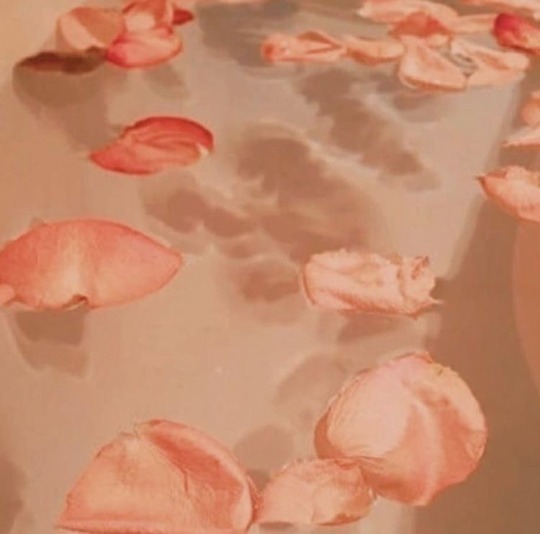

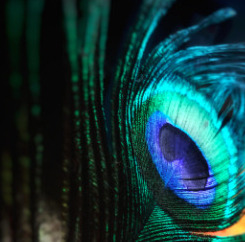

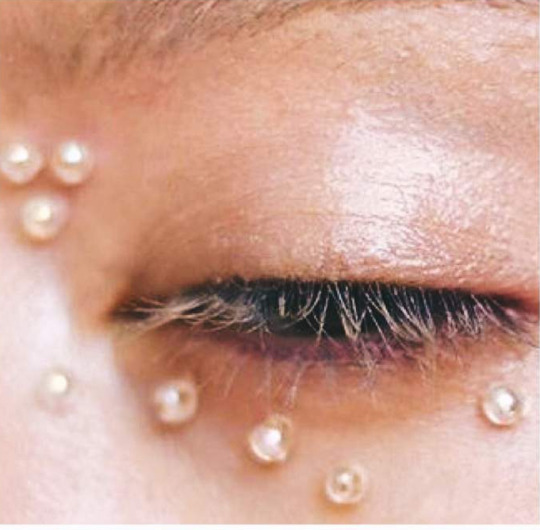
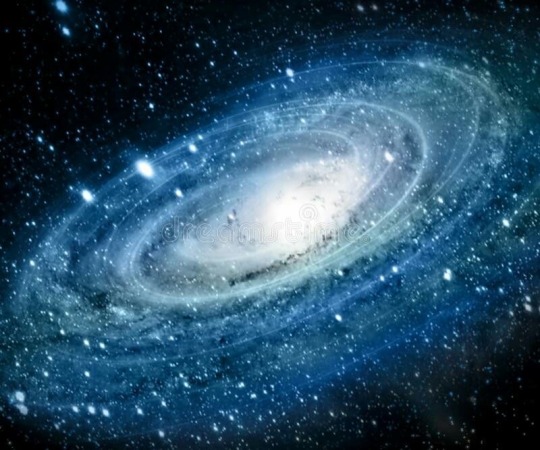

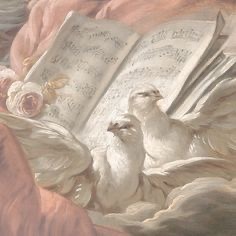
Krishna x Arjuniya 🦚☁️
“Arjuniya, having seen in confusion on the left side of the pleasing goddess Radhika, propitiating and offering a tāmbūla to him of a bright smile, was overcome with the passion of love. Then Sri Krishna, who knew everything, knowing her to be like that, seized her hand, and he the lord, the great master of magical art secretly sported with her in the entire pleasure-forest.”
- Padma purana, 177b-196a
(Art by _shirosawa on twitter)
#hinduism#arjun#arjuna#hindu mythology#mahabharat#mahabharata#desiblr#krishna#arjun x krishna#arjuna x krishna#Arjuni x Krishna#Arjuniya x Krishna#padma purana#Arjuni#Arjuniya#:3333333333#🦚☁️#mythology moodboard#mahabharata moodboard#hinduism moodboard#Moodboard#TV GIRL REFF#jkjkjk#Hindu Moodboard#ship moodboard#krishnablr#Lotus-Moodboards
20 notes
·
View notes
Text
Sri Radha said "I am Lalita Devi Herself, and in the world am known as Radha. As Kamakala, I manifest as Vasudeva. My true form is female and in my eternal self I am female. Yet as Lalita, I become male in the form of Krishna. In reality, there is no difference between myself and Krishna."
- Maha Padma Purana

#bhagavad gita#bhakti#krishna#vishnu#hinduism#Hindu#hindu mythology#lalita#goddess lalita#puranas#Tripura Sundari#shaktism#puja#hare krishna#mahavidya#mahadevi#shakti#esotericism#esoteric#occult#occultism
59 notes
·
View notes
Text
Padma Purana - Some Kind of Shelter (2021)
11 notes
·
View notes
Text

“All the grievous sins of one who one-pointedly worships Lord Sri Hari, the Lord of all the demigods and devotees, and chants the Hare Krishna maha-mantra, are removed.”~Padma Purana
12 notes
·
View notes
Text
Why has my Instagram field become so toxic these days?
Why are these so-called people talking about logic when they have none?
If you don't have any respect or are devoted to any particular God or Goddess why do you visit the accounts of the bhakts of that specific Goddess and post nonsense comments about them?
I have seen most cases in the accounts of those people who post about Mata Rukmini taking reference from religious texts. From every 6-7 comments there is one comment posted "Do you know Radha Rani?", "Who is 'this' Rukmini?", "Rukmini is just an expansion of Radha Rani", "Krishna is the Supreme Godhead more than Shri Vishnu" and just much more.
Authentic texts like Mahabharata, Vishnu Purana, Padma Purana, and others clearly state Mata Rukmini to be the eternal Shri the eternal consort of Maha Vishnu himself.
If you don't care about Mata Rukmini's assistance or have any kind of misconception about her then don't read or watch anything related to her and no need to leave page long comments questioning her devotion to Krishna and the Swarupa.
12 notes
·
View notes
Text
Not exactly mainstream mythology, but the past few days I've been thinking about how many goddesses and some gods are associated with rivers, and how their parentages changed over the years.
There is a Wikipedia page for the Rivers in Hinduism, and while I haven't been able to cross-reference some of these (Wikipedia, due to the nature of contributions, has a vast number of references from books, travelogues and anecdotes written by individual authors instead of actual scripture or local sources), many others are easily verifiable and extremely interesting. I'd still advise taking this with a grain of salt, though, because some might not be extensively true.
The south gets a separate post, and this one is a list of the most prominent rivers of the north:
1, Ganga: As the major river in the plains, Ganga has quite a few myths attached to her. There is, of course, the story of how she was brought down to earth, with a detour through Patala, by Bhagiratha, and the Ramayana makes her Parvati's sister and Himavat's daughter by his wife Mainavati, daughter of Mount Meru. During the descent, she floods sage Jahnu's aashram so the sage drinks her up completely. Bhagiratha comes to entreat him, and Jahnu, realising his mistake, lets her out of his ear. This is Ganga's rebirth, and also why so many people call her Janhavi.
Another myth that is attested in the Devi Bhagwata Purana labels her as Vishnu's wife, along with Lakshmi and Saraswati. Once Saraswati accuses Ganga of trying to steal Vishnu's love. Vishnu refuses to intervene in this, but Lakshmi tries to soothe Saraswati, who becomes angrier and curses Lakshmi to be born on earth as a river (which Vishnu later alters so she is born as both the Padma(vati?) river, and the Tulsi plant). Ganga gets upset that Lakshmi got cursed defending her, and curses Saraswati to become a river, and adds on that men will wash away there sins in her waters. Saraswati gets even madder and curses Ganga to also become a river with the same conditions . Then Vishnu intervenes, and declaring he will keep only Lakshmi as his wife, and sends Saraswati to Brahma and Ganga to Shiva. Which is a hell of a thing to say when you have three wives in who were quarreling for your affection and you did not interfere. Predictably, the three of them band together and Vishnu in the end has to back down. A third part of Ganga goes to Shiva's hair, a third into Bharata, and the full part (no I don't get the math either) stays with him at Vaikuntha. Similarly, the other two remain his wives in Vaikuntha, while simultaneously being rivers and all the other things they're supposed to be.
The story of Ganga marrying Shantanu and drowning seven of their eight kids is pretty popular, but this myth has a bit of a prequel, in which everyone gets cursed. Ganga (called Janhavi in the Mahabharata, because she was reborn to the sage Jahnu) and this other Suryavamshi King are attending Brahma's court with the other gods. Suddenly, the wind blows off Ganga's clothes, and everyone averts their eyes, except the King. Brahma is furious at the disrespect and curses him to be reborn on earth as a man, and Ganga, who apparently didn't mind as much, decides to follow him. In some versions, she also gets cursed because she enjoys the act of being watched and Brahma went "get a room and the room is the earth". As she is leaving the meeting, she runs across the Vasus, who also just got cursed, and offers to help them. Nice :)
Also the Devi Bhagawata Purana makes Shantanu a part of Vishnu to retain Ganga as Vishnu's wife, which, given that both he and Krishna did their best to cause war, makes sense in a weird type of way.
The sacredness of river Ganga comes from the fact that she interacts with all the three supreme gods. The Bhagwata Purana says that when Vamana Vishnu stepped for the second time, his toenail pierced the fabric of the universe and let in the water from outside in the form of Ganga (yes, this is exactly what is written. I'm not exaggerating one bit, they even call her Vishnupadi for this). Then she passes past the Saptarshis, into Brahma's city, and afterwards Shiva picks her up and ties her in his hair so her force will not shatter the earth.
The Agni Purana depicts her as a fair-complexioned goddess with a pot and a flower, and names her vehicle the crocodile.
2. Yamuna: She is very often referred to as Kalindi in later texts, and is included among Krishna's eight principal wives, and also plays an important role in Krishna's childhood myths. By and large, her parents are accepted to be Surya and Sanjana/Saranyu, which makes her related to a bunch of Kunti's children in some really complicated ways.
[Side note: despite Indra being the King of Gods, Surya appears to have a much broader influence in the genealogy of heroes and most of his children end up being kings and queens.]
There are a few early texts that equate Yami with Yamuna, and by that metric, here is another story about her. In one version, attested in the Rig Veda, Yami wishes to marry her brother Yama and gets rejected. It sounds like a dialogue between a little sister and her big brother, because all Yami says is, "Let's get married, and we will be beautiful and happy forever!" and Yama keeps dissuading her by saying things like, "No, that is wrong, that is sinful. You're going to get a lovely husband, don't worry." And then Yami gets upset and calls him a bad brother. But there is no basis for this, I just got those vibes. This is very likely a moral and social rejection of brother-sister marriage. In her book, The Indian Theogony, Sukumari Bhattacharji speculates that Yama-Yami may have been married at some point, as a parallel to all the married brother-sister couples across mythologies who retain their opposite and comparative nature, and Yama committed adultery to avoid laying with his sister.
Cute story about Yamuna and Yama: In my culture, and possibly some others as well, we say that Yamuna gives 'phota' to her brother Yama, and all sisters do the same to the brothers on Bhai-Phota to cover Yama's doors with thorns so he will never be able to take their brothers away. I think Bhai-Dooj, Bhai-Beej and Bhratri-Dwitiya are celebrated similarly.
There is another story, and this one involves coercive intimacy, so skip to #3 if this is uncomfortable for you. In the Bhagwata Purana (and the Agni Purana mentions this in passing), a drunken Balarama spots Yamuna and beckons her to come "play" with him (we all know what that means). She refuses and ignores his calls, so he gets mad and using his plow, diverts her waters into the orchard he was standing in. Now frightened, Yamuna apologises to him and agrees to "play" with him, explaining that she was unable to recognise him as the Supreme Lord. Evidently, this is supposed to be a metaphor for divertion of canals for irrigation.
The Agni Purana depicts her as a dark-complexioned goddess with a pot, and names the tortoise as her vehicle. It also names Yamuna's mother as Rajni, mother of Revanta and daughter of Raivata, and I have no idea who this is. There is one Raivata who is the father of Revati, Balarama's wife, but as far as I was aware he had no daughters named Rajni and Revanta was Sanjana's son so... Idk what happened here. The most likely option is that this Raivata is one of the Rudras, but he could also be the mountain Raivata or the fifth Manu Raivata, because the Agni Purana also mentions all of them them.
3. Sindhu: So, Wikipedia thinks this river is a goddess, sourced from a book called Rivers of the Rigveda by J.N. Ravi. I have always heard of Sindhu being labelled masculine (along with Brahmaputra) at least in my mother tongue. The Mahabharata calls him the Devanada - an exclusively masculine epithet meaning River of the Gods. But wisdom.lib, a mostly reliable website, notes that at one point Sindhu is invited to Parvati's meeting with other goddesses where they discuss the duties of women. I couldn't find it, but then again, Ctrl+F is useless in the MB pdf so eh.
The Rig Veda also appears to refer to Sindhu as a man. I have only the english version, so the accuracy of translation is difficult to pin down, however, Sindhu is compared to a king or lord leading an army (the confluence) and a fleet-footed stallion (but I've also seen a mare translation though smh). SIndhu is also considered to "unite" with several female rivers - Gomati, Shveti etc. And then, right after, Sindhu is called "as handsome as a beautiful woman". Also he is invoked with the goddess Aditi and Saraswati a bunch of times and is listed with the "Goddess Floods". So make of that what you will. Maybe Sindhu is a god who sometimes looks androgynous. Or he is trans as well. Or enby. Or something else. Idk.
Also in one version of Rig Veda I came across Sindhu being called the Dragon of the Deep and I think that's the coolest thing I've read while searching up the rivers.
Varuna is credited with charting out the river Sindhu's course, is very often invoked right before Sindhu, and is also said to glorify Sindhu (Mahabharata, Sabha Parva) so it is safe to say Varuna really likes him.
Interestingly, although he is supposed to be hailed before a battle or a sacrifice, Sindhu's chariot is said to perform no violent deeds. Whether this means the Sindhu river never flooded in those days* or something else, I am not very sure, but quite a few kings of the Bharata lineage sheltered in the Sindhu basin when attacked, so make of that what you will.
*This would be very strange because a) the Sindhu nowadays floods pretty often and b) Sindhu is also called "of the [mighty] floods" a bunch of times. His other epithet is "Sindhu with the path of gold" so it could also mean that Sindhu is a bounteous and fertile river.
It is likely that the region around the Sindhu River was known as Sapta Sindhu, after the seven sacred rivers - Sindhu, Vitasta (Jhelum), Asikli (Chenab/Chandrabhaga), Parushni (possibly Iravati, i.e. Ravi), Vipasha/Arjikiya (Beas), Shatadru (Sutlej) and Sarasvati.
4. Saraswati/Sarasvati: I am going to make a separate post for her because she is, by far, the most interesting of all the rivers when it comes to evolution pre and post Indra-supremacy age and there is a lot more to share.
#hindu mythology#hindublr#ramayana#ramayan#mahabharata#mahabharat#puranas#ganga#yamuna#sindhu#ganges#indus#rivers of india#meta#long post#vishnu#lakshmi#saraswati#balarama
11 notes
·
View notes